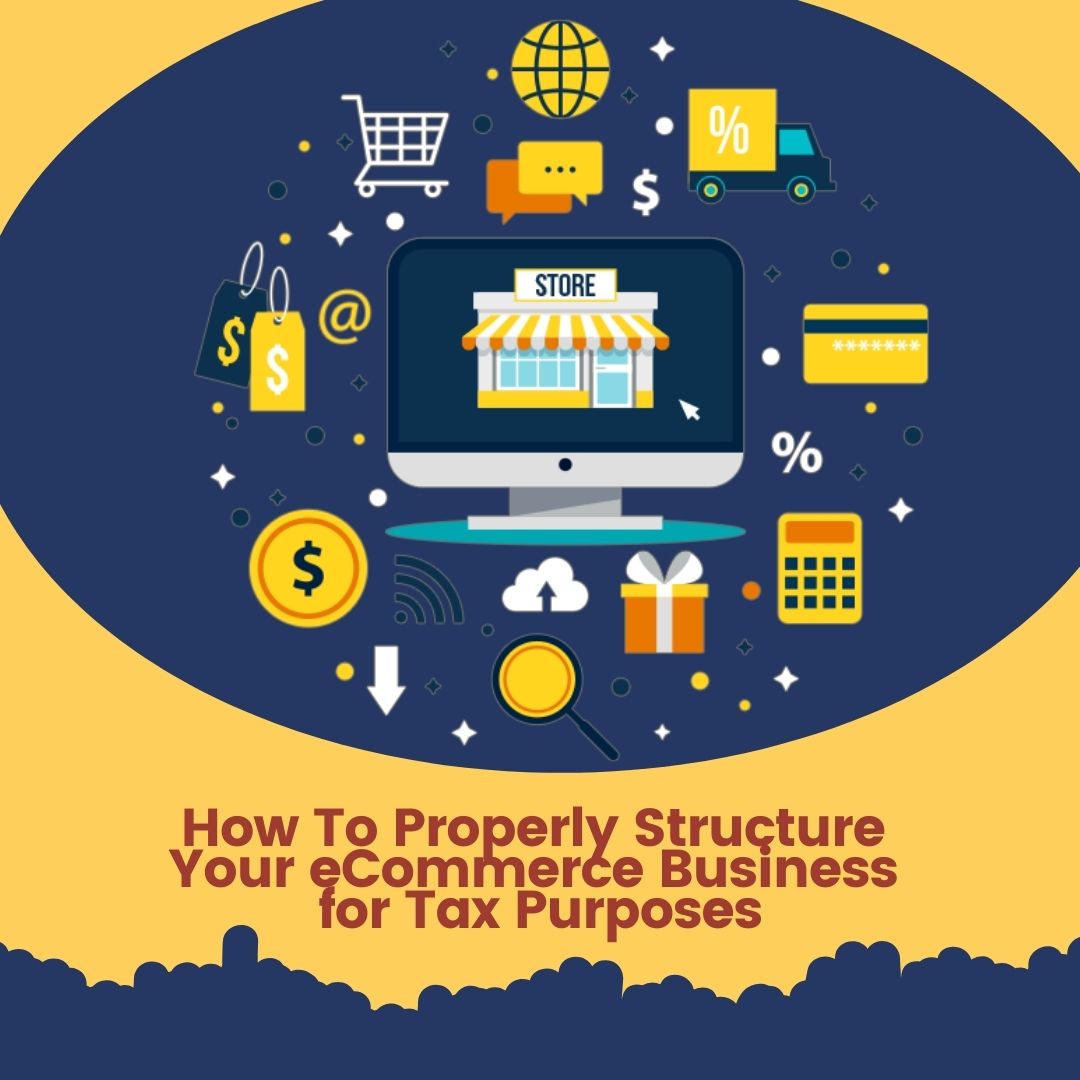How To Properly Structure Your eCommerce Business for Tax Purposes
Especially in the past few years, eCommerce has seen phenomenal growth. Just in 2021, according to the US Department of Commerce, consumers spent more than $871 billion online with U.S. merchants. With more and more eCommerce businesses hitting the marketplace, online buyers are seeing an increase in convenience, competitive pricing, and selection – including niche markets. As more and more consumers are taking advantage of these factors, it is an excellent time for more and more businesses to enter this marketplace.
But eCommerce business owners are also seeing more and more regulation of this market, including new and ever-changing tax laws. So, is there any particular business structure better than another for establishing a new eCommerce business? What does a business owner need to know about setting up a new eCommerce business to best situate themselves for both business and tax purposes?
Types of Business Structures
When deciding how to structure your eCommerce business, it is important to understand the pros and cons of each of the following options:
Sole Proprietor
Limited Liability Company (LLC)
Partnership, and
Corporation
Sole Proprietor
Forming a sole proprietorship is the simplest eCommerce business structure possible. There are no official forms to be filed, so no filing fees, no partners or board members to answer to, just all you and your ideas. However, because it is all you, all responsibility for that business rests on you too. And technically, when you sell your very first item, you have become a sole proprietor.
One very important aspect of a sole proprietorship of which every business owner should be aware is that not only are your business assets at risk if you were to be sued for any reason, your personal assets are also at risk. With a sole proprietorship, there is no separation between business and personal assets.
In regard to taxes, the IRS does not consider a sole proprietorship to be a separate entity from the owner. Because of this, taxes are assessed using a form of taxation called “pass-through taxation”. This means the taxation “passes through” the business and is paid directly by the owner. The amount of taxes to be paid is calculated using a Schedule C which is included with the owner’s personal tax return. The net profit or loss from the business is added to the owner’s Form 1040. In addition, the ower has to include a 15.3 percent self-employment tax in place of the Social Security and Medicare amounts that would normally be taken out of a paycheck.
So, while it is definitely the easiest and least expensive structure for forming an eCommerce business, it could actually end up as the most expensive. If a disgruntled customer were to sue and be awarded damages, they would have equal access to any personal assets in addition to any and all business assets.
Limited Liability Company (LLC)
One of the safest business structures is a Limited Liability Company (LLC). This structure offers personal and business liability protection. This means no one can try to take your personal assets in the case of a lawsuit, nor can they take your business assets in the case of a lawsuit against you personally.
This structure also has no restrictions as to how many owners you can have or who can manage the business. This structure, like a sole proprietorship, is taxed as pass-through taxation, meaning the business itself is not taxed but any and all owners are taxed on their individual income from the business.
Partnership
A partnership works in much the same way as a sole proprietorship in that taxes pass through to the owners. In the case of a partnership, there are at least two owners who share the debts and other financial responsibilities of the business including the payment of taxes.
In a partnership, it is important to have a legally binding contract or other such agreement, clearly specifying each partner’s rights and responsibilities. This contract should also include a clear plan for what will happen with the business if one of the partners decides to leave.
Corporation
Perhaps the biggest appeal of a corporation-style business structure is that once it is created, it is a completely separate entity from the owner/owners, so all personal assets are protected.
Owners of a corporation can also sell shares to that business, which provides another avenue for income.
What often turns eCommerce business owners away from structuring their business as a corporation is the amount of paperwork, filing fees, and tax rates. Not only do you have to file bylaws and minutes from required corporate meetings, but you also have to make sure you are holding those meetings at legally-required intervals.
Corporations are taxed as a business, and often at a significant rate. This alone has caused many business owners to avoid this structure. In 2017 the corporate tax rate was reduced from 35 percent to 21 percent, but that is still a significant enough rate to scare off many business owners. And C Corporations are actually taxed at that flat 21 percent, but owners and shareholders are also taxed again at the individual level. So most eCommerce startup businesses will steer clear of this option.
Conclusion
How you structure your eCommerce business is a choice only you can make after carefully considering all available options. It is wise to consult with tax specialists, like those at Melanin Tax Solutions, to make sure you have a full understanding of the pros and cons of each structure option. So contact us at Melanin Tax Solutions today so we, and our vast network of experts, can help you more confidently navigate your options.

